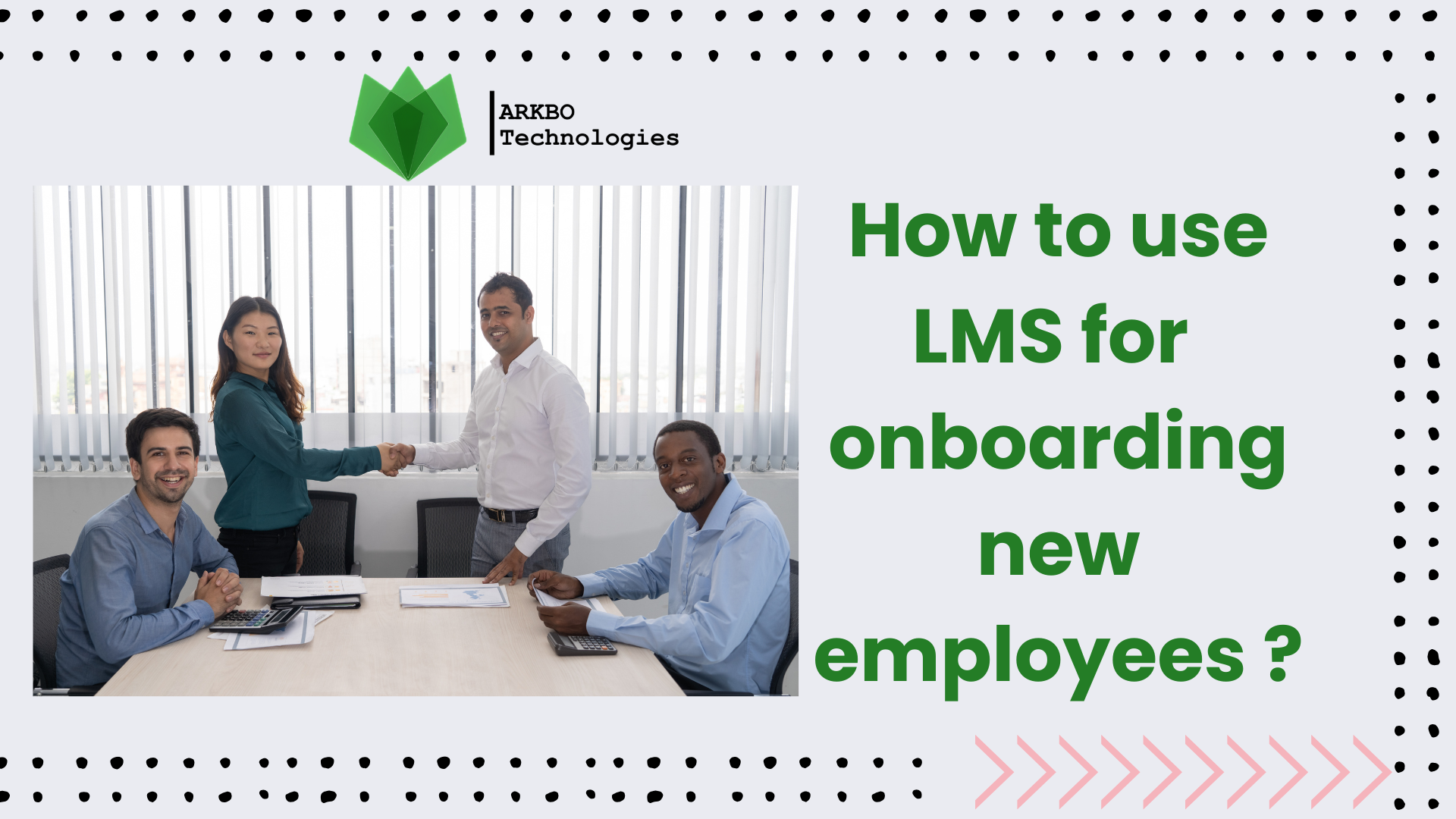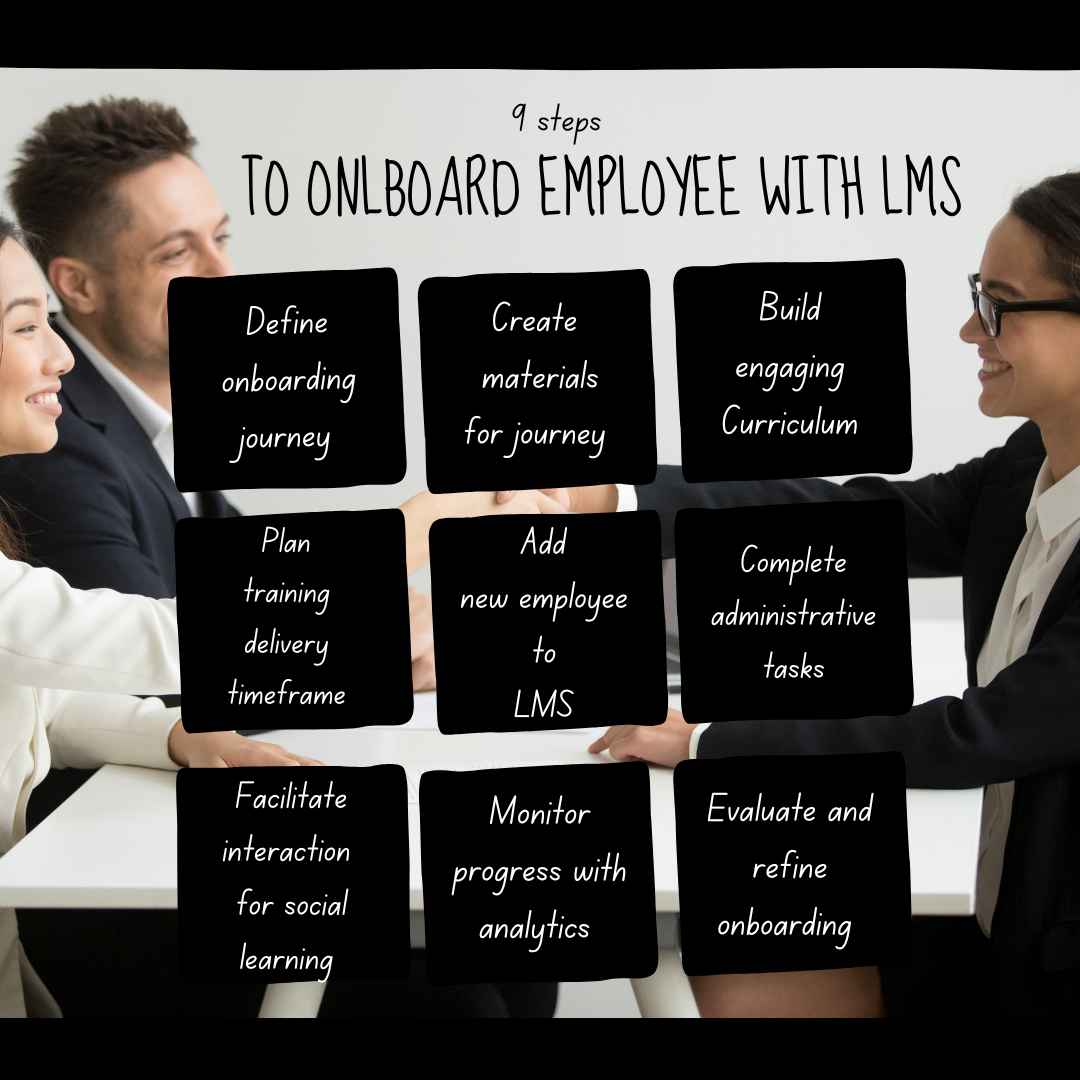
Do you know good onboarding process makes employees more engaged and productive? In fact, 69% of employees who have a great onboarding experience are more likely to stay in the company for at least 3 years (Devlin Peck).
However, traditional onboarding methods are often long, inconsistent, and don’t track progress properly. This is where a Learning Management System (LMS) comes to help. How? In this blog, we’ll dive into the benefits of using LMS for a quicker and smoother onboarding process.
What is employee onboarding?
Employee onboarding is a formal process of welcoming and helping new employees adjust to the organization. It includes activities like orientation, training, and introducing employees to their team, company policies, and job duties so they can start working confidently and effectively.
Did You Know: Onboarding cuts time to productivity by 50% and helps 87% of employees clearly understand their job (BambooHR).

In a general setting, onboarding is done in 4 phases: preboarding, orientation, training, and integration. Thus, an average onboarding process for companies is around one week. However, the size of the business and the complexity of the position determine how long it takes to onboard new employees.
According to the 2022: The Year of Access Report, 47% of companies struggle with onboarding employees due to infrastructure access challenges. Paper processes, redundant tasks, and departmental silos often complicate this process, creating obstacles within an organization’s IT infrastructure. An LMS (Learning Management System) can effectively address these issues.

An LMS can provide a structured, interactive experience that keeps new employees engaged through modules, videos, gamified quizzes, milestones, etc. Also, the built-in assessments are used to help HR or managers assess new employee readiness, as well as gaps that need to be addressed. This platform acts as a 24/7 knowledge base to refer back to any course materials, policies, or guides when needed. This enables employees to review policy sources and operational guidelines at their convenience, promoting continuous learning.
Let’s look into the steps you should take to start onboarding using an LMS platform.

The first step is to set clear onboarding goals and the outcomes. Some of such goals can be:
All in all, you must determine what the new hires need to know by the end of their onboarding period.
Once you have set the goals, you need to come up with engaging content for the employees who are to join the company. The content can be videos, slides, interactive quizzes, product walkthroughs, and compliance modules. You can mix all such content to make the onboarding session more interactive.
Once you have defined the content for the onboarding program, it is time to organize the modules in a logical sequence. You can start with welcome messages and company culture, then move on to role-specific training. The important thing in this step is to incorporate structured learning paths based on roles, departments, or locations so that each hire receives the most relevant training.
Now is the time to break down the onboarding process into clear timelines. For example:
Day 1 for orientation
Week 1 for compliance training
Week 2 for role-specific learning
Defining the time frame helps prevent cognitive overload while ensuring a structured learning experience.
Once all content for the onboarding process is finalized, you should enroll the new hires on your LMS platform. You can either go with batch uploads or integrate your LMS with your HR system for seamless user management.
You can use the LMS platform to complete HR paperwork, collect digital signatures, and handle benefits setup. This will save a lot of time and reduce errors.
For peer interaction and team introductions, you set up forums, discussion boards, or chats within the LMS. Here, you can assign mentors or work buddies to new hires to provide guidance and answer questions.
You can check your new hires' activity using real-time LMS dashboards and reporting tools to track course completion, engagement, and assessment results. These data and analytics can spot any bottlenecks and identify learners who might need extra support, and help managers or the human resource department to offer feedback.
There is always room for improvement in your employee integration process. You can gather opinions from new hires about their onboarding experience. Based on their experience, you can include necessary or suitable changes. Besides that, you must regularly update content to keep it in line with evolving policies, technologies, and processes for ongoing improvement.
With a plethora of LMSs available in the market, it becomes daunting to choose a suitable one for your organization. Thus, you must look for the following features when selecting an LMS for the onboarding process:
Supports various multimedia content
Offers a user-friendly experience
Provides robust analytics and reporting features
Allows for automated enrolments and reminders
Enables mobile learning access
Integrates smoothly with HR systems
Besides these qualities, you must consider factors such as the organization’s size, budget, and hiring objectives when choosing an LMS for hiring new employees.
For a corporate organization where new hire integration is always systematic and has to be recorded, an LMS platform like ARKBO LMS is great. ARKBO LMS is a great LMS system in Nepal. L&D managers, HRs, or employers can include structured and engaging content. Not just onboarding, this LMS can help you with customer acquisition or partnership initiation.
Want to elevate your corporate onboarding process? Book a demo of ARKBO LMS today to streamline your onboarding and cultivate a productive workforce from day one.
Employee onboarding is the process of welcoming new hires and demonstrating their roles and responsibilities. Using a Learning Management System (LMS) like ARKBO LMS can speed up and simplify the process of onboarding. To enable new hires to learn at their own pace through videos and quizzes, an LMS plans training, automates activities, and monitors progress.
Along with the welcome and training process, an LMS facilitates sales enablement, compliance training, upskilling, and leadership development. Therefore, an LMS can be incorporated to efficiently optimize and enhance all of these learning procedures.
Read More: Complete Guide to Learning Management System (LMS)